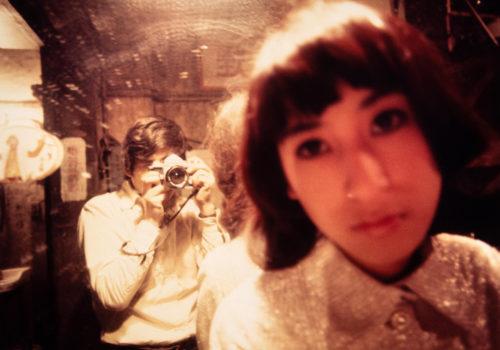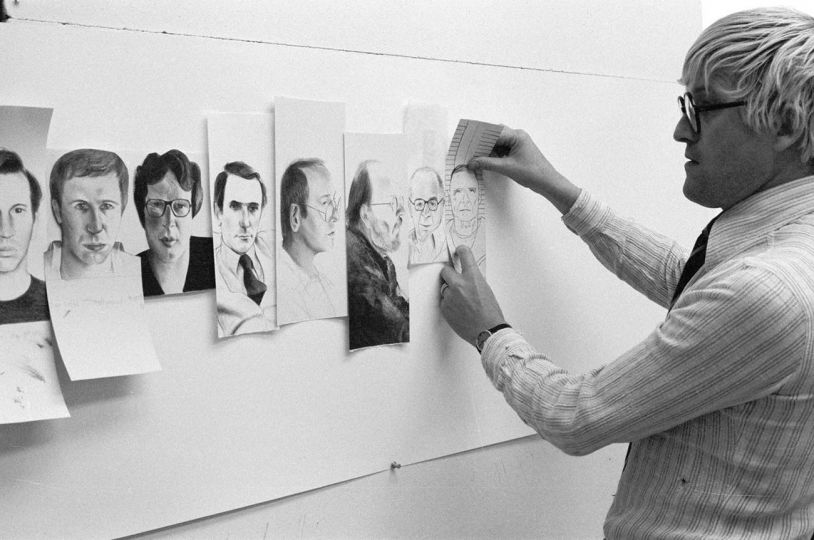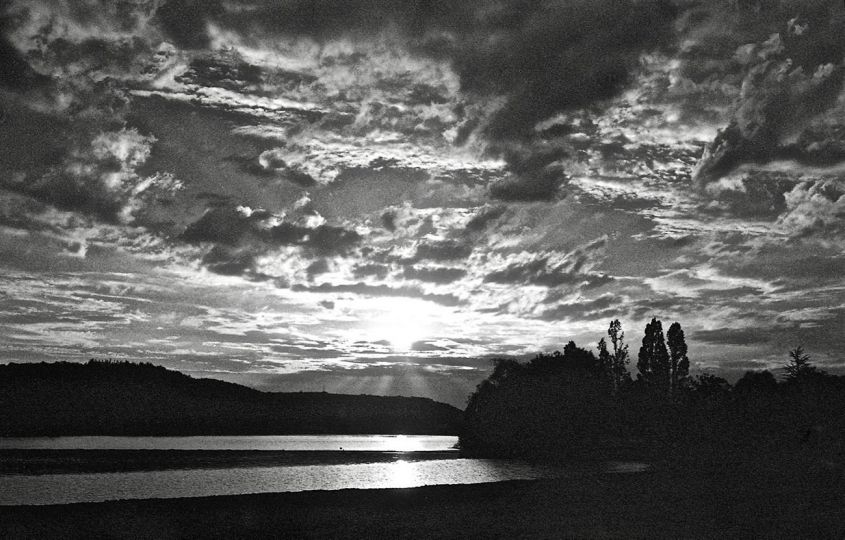Japanese ideograms can be pronounced, and their meanings interpreted, in alternate ways. Photographer Daido Moriyama’s given name is Hiromichi, the ideogram for hiro signifies ‘big’ and michi, ‘way.’ But the ideogram can also be interpreted as dai do (broad way). The latter was adopted by the photographer early in his artistic life and is reflective of his approach to photography. Moriyama’s pictures are often presented without context, paired with seemingly random images to create new connotations and associations, to question notions of reality and probe memory, to convey alternate meanings.
As Daido Moriyama: A Retrospective reveals, over the 60 years he has been taking pictures, Moriyama has consistently pushed himself to think hard about what a photograph is and can do. He has used the medium to investigate ideas of reality and memory, both personal and collective; to expose and question our humanness and inhumanness; to challenge perceptions and contest societal power structures; to explore personal identity and mortality.
Born in Osaka prefecture in 1938, Moriyama was a twin who grew up without his other half; his older brother died as an infant. This loss, and the spectre of death, has accompanied Moriyama throughout his life, informing how he sees the world and how he understands photography’s “relationship with memory and history,” as Thyago Nogueira, the curator of the retrospective, writes in the catalogue. Nogueira’s essay provides fascinating insights into Moriyama’s artistic choices.
Moriyama’s personal relationship with photography began in the mid-1950s when he discovered the work of William Klein whose 1956 photobook New York blew Moriyama’s mind: “For the first time in my life I got to experience the physiological pleasure and impact of the images known as photography.” In the early 1960s, Moriyama moved to Tokyo where he worked as a photography assistant. He honed his darkroom skills and began to experiment with exposure and contrast, elements that would come to define his own practice.
In the sixties and early seventies, the photography scene in Tokyo was buzzing. It was a moment of “cultural effervescence,” to borrow from Nogueira, a period in which new photography magazines abounded and artists were free to create photo stories on myriad subjects. Moriyama found a tribe of like-minded souls who encouraged one another to experiment. His first published series, ‘Pantomime,’ appeared in February 1965 in the left-wing magazine Gendai No Me. As Nogueira notes, the series comprised “grim photographs of human fetuses preserved in formaldehyde,” specimens Moriyama had found in a disused gynaecological hospital.
A picture from this series appears on the first page of the catalogue Daido Moriyama: A Retrospective. If the subject matter isn’t gruesome enough, these images are made even more disturbing and surreal by the elements that have come to define Moriyama’s visual signature: harsh contrast, gritty, blurry, and grainy images that punctuate the narrative stopping the viewer in their tracks. Yet for Moriyama the series is about self-reflection, an inner journey: “when I was photographing the embryos…it felt as if I was photographing myself,” he says.
A personal connection to the work defines Moriyama’s practice as does his complex relationship with the photograph which he describes as both fascinating and dangerous, ideas that are wrapped in notions of the photograph as truth and as a copy of reality. Much of his early work is underscored by the desire to challenge the idea of documentary photography or photojournalism as being true representations of the world. As Nogueira observes, Moriyama has openly embraced ambiguity and subjectivity, concepts realised in his aesthetic choices. Looking through the breadth of work in the catalogue, it is evident that Moriyama creates narratives that are open-ended and which invite the viewer to make their own determinations about what is depicted.
Even in the ‘anything goes’ sixties, Moriyama drew criticism with purists claiming his aesthetic was evidence of a lack of technical skill. Resolute, Moriyama kept experimenting, challenging the role of photographers including himself. He published in magazines liberally between 1965 and 1974 and the catalogue contains a selection of this work also. During this period, Moriyama consistently created and published new work that examined some of the key social and political issues of the day in Japan including the role of the news media in creating collective memory and in sensationalising crime. He also addressed the cultural implications of the Westernisation and industrialisation of Japan.
In these bodies of work, Moriyama played with various artistic styles, taking pictures of photographs published in the press, or screened on TV, and making photocopies of news pages. Over six decades, Moriyama’s practice has not drifted from the artist’s probing, of life, himself, and of the medium, although he has at times strayed from photography. Yet even when leaving photography behind, Moriyama says that it is a constant companion, if at times only in thought.
Much of the work in the exhibition and the catalogue is Moriyama’s trademark high contrast black and white. There is a small selection of colour work, but the black and white remains captivating and timeless. The book features an exceptional essay by Nogueira as well as a reprint of Moriyama’s writing that accompanied the 1982 publication in Asahi Camera of his series “Memories of a Dog.”
Now an octogenarian, his passion for experimenting with photography and making social commentary has not diminished. Daido Moriyama: A Retrospective closes with two black and white photographs taken in 2021: on the left hand side is a picture of a homeless person sleeping on the sidewalk, the form shrouded in cloth, the face obscured. On the opposite page is a photograph taken during the pandemic. This picture features young, masked people on the streets of Shinjunku, Tokyo, heads bowed in reverence for the mobile phones in their hands. Both pictures raise questions of conformity and identity.
Often, Moriyama is labelled a ‘street’ photographer, but Daido Moriyama: A Retrospective demonstrates how his breadth and influence reach far beyond a singular label. It is fascinating to witness the evolution of his work with the first image in the catalogue taken in 1964 and the last in 2021. This collection of 250 images accompanied by Nogueira’s brilliant articulation and Moriyama’s own words, takes the reader on a journey through space and time, through personal experiences and collective memory. Daido Moriyama: A Retrospective reveals an artist of great depth, affirming Moriyama as one of Japan’s foremost photographers and photography as a truly remarkable, and enduring, means of exercising a curious mind.
Daido Moriyama: A Retrospective opens at The Photographers’ Gallery in London October 6, 2023 and runs until February 25, 2024. Both the exhibition and catalogue were originally conceived by Instituto Moreira Salles, Brazil, where curator Thyago Nogueira works as the head of the Contemporary Photography Department.
Alison Stieven-Taylor
The book, Daido Moriyama: A Retrospective Edited by Thyago Nogueira, Instituto Moreira Salles (Brazil) is published by Prestel Verlag, 2023.
– Book: Daido Moriyama: A Retrospective Edited by Thyago Nogueira, Instituto Moreira Salles (Brazil) © Prestel Verlag, Munich · London · New York, 2023.
– Daido Moriyama Foundation: https://www.moriyamadaido.com/en/
– Instituto Moreira Salles: https://ims.com.br/
– The Photographers’ Gallery: https://thephotographersgallery.org.uk/
















